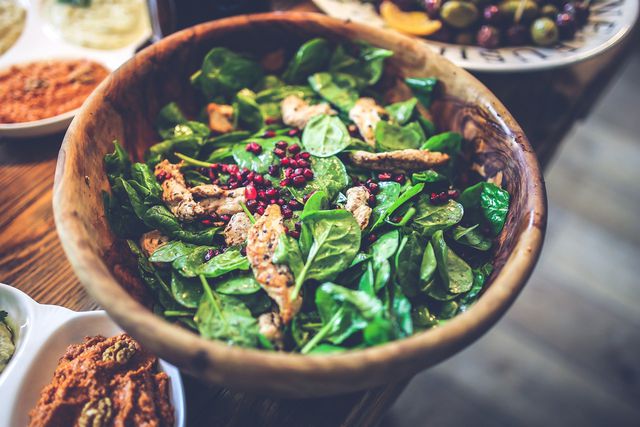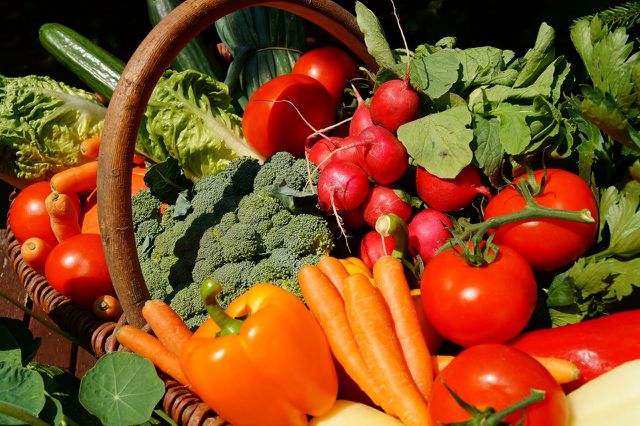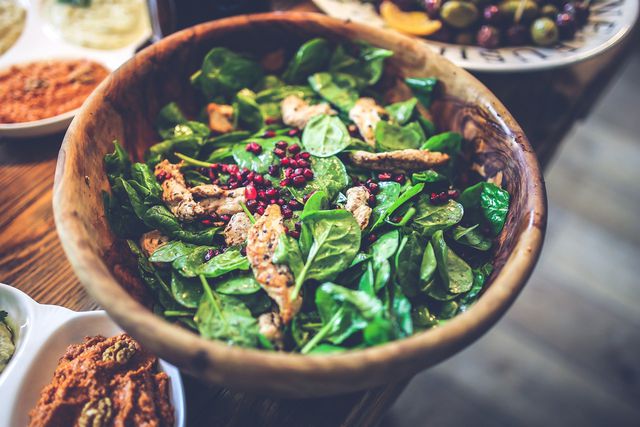Low-purine foods should be on your shopping list if you have gout. This list shows you that you can still eat varied and diverse.
Why low-purine foods are the right choice for gout

Change your diet and reduce the purines in meals: This is what your doctor recommends if you suffer from gout.
Gout is a metabolic disease in which the kidneys have trouble getting rid of uric acid in the body. Uric acid is left over from metabolism when your body breaks down purines.
Purines are the building blocks of genetic information in cells. This means that purine is basically contained in every cell – and also in almost all foods. However, it occurs in different amounts and has different compositions.
Gout patients can easily tolerate up to 200 milligrams of purines per day in their meals. However, the exact amount you can tolerate depends on several factors. For example, your height and weight matter. Get medical advice on this.
With the help of tables and online calculators, you can check how much purine is in your meals and how much uric acid it produces. The German Gout League, for example, provides a calculator online.
But you don’t have to calculate that much in the long run as soon as your uric acid level has normalized again. Nutritionists recommend a normal, varied and balanced diet with low-purine foods for gout.
Vegetables, fruits and vegetable oils contain little purine. A wholesome diet for gout therefore relies particularly on these products to reduce uric acid.
On the other hand, there is a lot of purine in meat, fatty sausages or alcohol – especially in beer. These foods can cause a gout attack.
You should also avoid ready meals and sugary foods. According to the Apotheken-Umschau, industrial fructose syrup in particular, such as isoglucose, is not compatible with gout.
Lower uric acid through diet: Milk is purine-free
Milk and milk products contain almost no purines. So here you can access gout to your heart’s content. Basically, the less fat a dairy product contains, the lower its purine content and the more suitable it is for lowering uric acid.
Low-purine foods based on milk include:
Low-fat milk or kefir
plain yoghurt or skyr
Quark or cream cheese – you can mix a purine-free spread or salad dressing with fresh herbs such as parsley or chives, for example.
Feta cheese, cottage cheese, or mozzarella. It is best to use mozzarella made from cow’s milk. The animals on the farms often have to suffer for the buffalo mozzarella, which is traded as a delicacy.
Sliced cheese, such as Edam or mountain cheese.
Eggs – choose organic eggs from species-appropriate animal husbandry that also keeps the male chicks alive.
Low-purine foods: These types of vegetables belong on the menu

Some vegetables contain more purines than others. Legumes such as beans, lentils or soybeans are considered critical, as are asparagus and spinach.
Doctors no longer generally eliminate these healthy vegetables from their diet in the case of gout. They recommend adding vegetables with higher purine content to your diet as soon as you no longer need to lower your blood uric acid levels any further.
For example, these types of vegetables are among the particularly low-purine foods:
Salads – salads with bitter substances such as rocket or dandelion are well suited. Tip: Both are also ideal as a basis for pesto.
Kohlrabi
cucumber
carrots or parsnips
Paprika supports the healing process with the inflamed limbs through the vitamin C.
Tomatoes – not all have to be red and round. Many old tomato varieties offer variety, both for the look on your plate and for the taste.
pumpkin
You can plant many of these vegetables yourself in the garden or on the balcony. So you always have low-purine foods on hand.
Low-purine foods: fruit always works
Fresh fruit is also usually one of the low-purine foods. You can enjoy it every day as a dessert or as a snack in between.
There is a small restriction for fruits that are naturally very sweet, such as pears, honeydew melons, sweet cherries or persimmons. Dried fruit is also less suitable because it contains a lot of concentrated sugar. The Apotheken-Umschau reports that fructose can impair kidney function. Therefore, artificially sweetened foods are critical in gout.
However, most fruits are low-purine foods. For example, you can access:
Apples – the local fruit is rich in vitamins and contains hardly any purines. Try out different regional varieties and let yourself be surprised by the taste.
Berries – Strawberries, currants, blueberries, blueberries, gooseberries or aronia berries contain many vitamins. Vitamin C in particular supports the healing process after a gout attack.
Plums – the slightly sour varieties such as the local plums are particularly suitable.
peaches or apricots
Important: Always buy your fruit and vegetables fresh, avoid canned goods and, if possible, frozen goods. It is ideal if you stock up locally with freshly harvested organic fruit and vegetables. In this way you avoid chemical-synthetic pesticides and contribute to climate protection because your food does not have to be transported long distances.
Low-purine foods: There are exceptions for meat and fish

Meat, poultry, fish or crustaceans – all of these have a high purine content. The value rises even higher when additional fat, skin or innards are added. For example, a fried chicken with crispy skin contains more purines than a lean breast fillet.
According to the recommendation of the Society for Nutrition (DGE), even healthy people should not eat more than one meat meal (300 grams) per week.
But there are exceptions. According to NDR, the following types of meat products are among the rather low-purine foods:
lean poultry – important: always prepare without the skin.
lean beef or venison.
Basically, a diet without a lot of meat is healthier. But: Beware of meat substitutes! Pay attention to the ingredients, because tofu also contains a lot of purine. It consists of soybeans, which in turn are among the purine-rich legumes.
Fish: The same applies here – skinless fish has fewer purines and is therefore better tolerated. In addition, fish fats are good for your health: Unlike fatty acids in meat, fish contains omega-3 fatty acids that can inhibit inflammation.
But: eel, halibut, carp, plaice, sole, herring, mackerel or salmon are good for your health – but fishing is often at the expense of the environment. Many of these fish species are already overfished. Endangered fish species are often caught by the fishermen. Therefore, pay attention to species-appropriate fishing or buy fish from sustainably managed organic aqua farms. The Greenpeace fish guide tells you what you as a consumer can do to protect the oceans.
Also pay attention to high-quality organic crayfish, shrimp, crabs and mussels.
